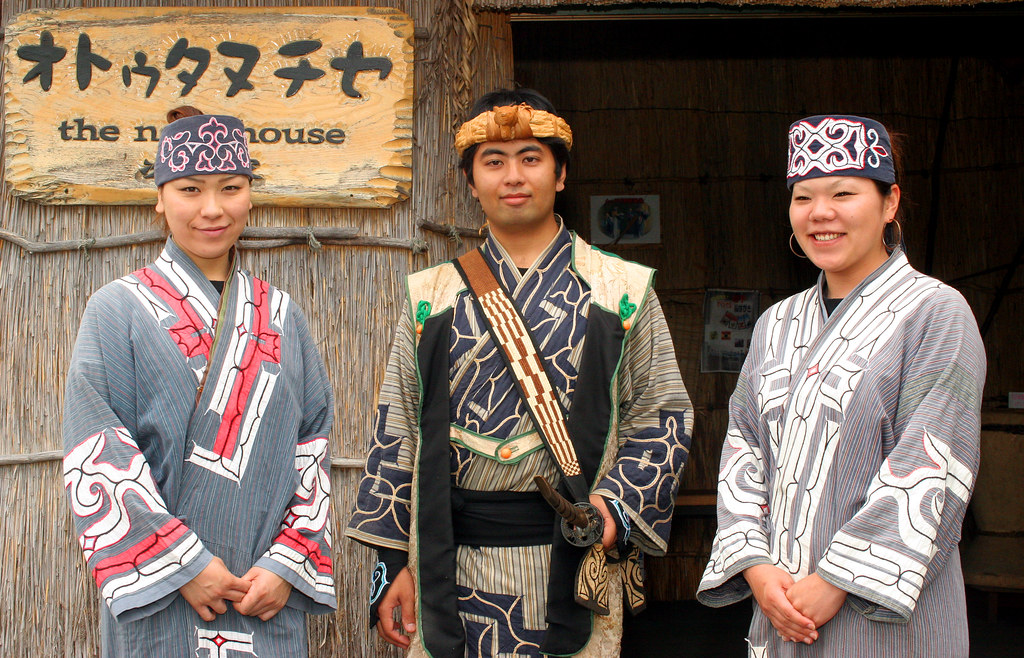Michael Osborne heads to Japan in search of ancient traditions and birds that enjoy the snow.
Where is Hokkaido?
When we think of Japan we always think of Tokyo, Kyoto, Mt Fuji, Osaka, Hiroshima and Sapporo beer. So where is Hokkaido? Well, it is the big island to the north and it is also the home of Sapporo beer.
Hokkaido is an island of unique culture and nature, rich in history and sensational natural beauty and an abundance of wildlife including the Tancho crane, Japan’s natural bird figurehead. An auspicious bird that was once thought to have gone extinct. The bird’s beautiful contrasts of white, black and a red crest make it even more distinctive. The Tancho crane has been called Sarorun Kamuy (deity of the wetlands) by the Ainu people since ancient times. The Tancho crane is also revered as a symbol of a good marriage because the birds stay together in mating pairs for their entire life. The depth of this love and devotion is evident in the anecdote where a wounded male who could not fly carried food from a feed site to his family far away on foot.
 |
| Members of the Ainu culture in traditional dress at the Ainu Museum, Hokkaido Japan. (Roderick Eime) |
The original inhabitants are the Ainu people, who have been here for thousands of years and many still follow their ancient customs and beliefs. Using bird feathers for clothing, gathering food for winter and following traditional song and dance as part of their lifestyle.
But firstly, let’s talk about the weather. I travelled in early January when the temperatures ranged from around zero to minus 20 Celsius. This creates a huge amount of some of the finest powdery snow that skiers love. The island is dotted with ski fields and resorts. The best one, they claim is Niseko The prince of powder’ with many resorts and around a thousand hectares of skiable snow. Most resorts also feature the Onsen or hot springs. They say these are so relaxing you can hear the snowflakes falling!
For those wanting to go in warmer time’s agriculture is the mainstay of the island. The freshest of products combined with the Japanese methods of preparing food creates gourmet heaven. As we were there in winter the Ramen style was ideal to warm us up for the outdoor challenges.
 |
| Sushi delights (Michael Osborne) |
There are four different ramen soup bases that originated from the island: miso (Sapporo), shoyu (Asahikawa), shio (Hakodate), and curry (Muroran). Everyone tends to have a personal preference for which flavour they like with their noodles, but why not try them all before you make up your mind.
In spring and summer, the weather is mild and with very little humidity, making it ideal to explore the wonderful and listed National Parks and Wildlife Reserves.
The places we are going to visit.
The two-hour flight from Tokyo lands at Wakkanai which is the northernmost town and capital of the Soya Subprefecture of Hokkaido.
In the Ainu language, Wakkanai seems to mean ‘cold water river’. Cape Soya in as far north as you can go and they say that on a clear day you can actually see the Russian island of Sakhalin. We were lucky to see more than a few hundred metres due to the snow storm.
Then heading South we arrive at the town of Toyotomi, which is the gateway to the sensational Sarobetsu Wetlands and wilderness area.
A visit to the Centre is a must where you can watch a video of the year-long changes to the 20, 000 hectares of wonderful nature at its best.
 |
| The red-crowned crane (Grus japonensis), also called the Manchurian crane or Japanese (Tancho) crane (Martha de Jong-Lantink / Flickr) |
Not far away is Lake Saroma, the largest brackish lake in Japan and year-round home to a huge selection of wildlife and where I see my first Tancho Crane. The lake is separated from the ocean by a 25-km sand spit which protects some very special flora and fauna.
Furano is a more laid-back destination famous for picturesque rolling fields of lavender and other summer flowers in warmer times. In winter, top-class skiing and snowboarding opportunities are on offer in this scenic rural area.
Abashiri City is on the ocean and is noted for the drift ice in the Sea of Okhotsk. Also noted for its museums, national parks and wildflower reserves.
As it was minus 20 when I was there I really appreciated the heated footpaths when checking out around the city.
In the following reports of my Hokkaido adventure we will go into more detail of the places visited, but if you can’t wait:
https://www.japan-guide.com/list/e1101.html
Michael Osborne travelled as a guest of Hokkaido Tourism







No comments:
Post a Comment